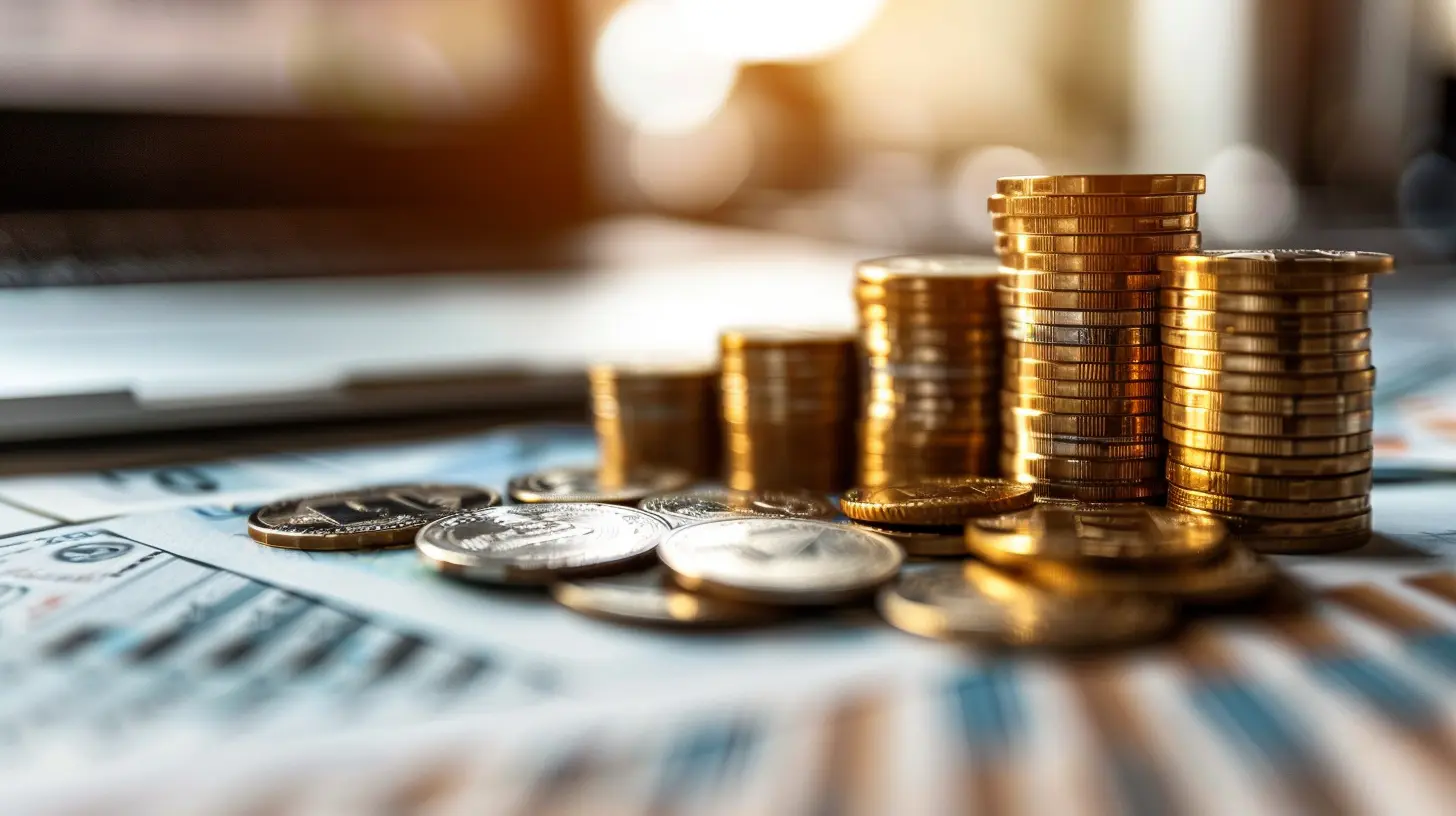The Role of Intangible Assets in Business Valuation
24 September 2025
When you think about what makes a business valuable, what comes to mind? Giant office buildings? Shiny equipment? A fleet of company cars? Sure, tangible stuff matters. But there’s a hidden treasure chest many people overlook—intangible assets. These are the secret sauce behind big brand names, loyal customers, and billion-dollar valuations.
So, if you're scratching your head wondering what exactly intangible assets are and why they matter in business valuation, buckle up. We’re about to dive into the invisible, yet mighty powerful world that often makes or breaks a company’s worth.
What Are Intangible Assets, Anyway?
Let’s put it simply. Intangible assets are things you can’t touch, but they’re incredibly valuable. They’re the brainpower, heart, and soul of a company.We're talking about things like:
- Brand recognition (Coca-Cola ring any bells?)
- Patents and copyrights
- Trademarks and trade secrets
- Customer loyalty
- Goodwill
- Proprietary technology
- Company culture
- Software (especially if you wrote your own)
Imagine a music streaming service. Its office space might be worth a million bucks, but its technology and user experience? That’s the gold mine, and it’s all intangible.
Why Should You Care About Them in Business Valuation?
Now, here’s where the magic happens. When you evaluate a business—not just the bricks, but the brains—you quickly realize that intangible assets often account for the lion’s share of the value.In fact, studies show that for many modern companies, especially in tech and services, intangibles make up over 80% of total valuation. That’s huge!
Even in a small business, your customer list, custom software, or strong reputation could be worth more than your physical office. So if you're ignoring intangibles, you're basically bringing a flashlight to a fireworks show—you’re missing the real spark.
The Two Flavors: Identifiable vs Unidentifiable Intangibles
Alright, let’s break this down a bit more. Not all intangibles are created equal. Enter the two main types:1. Identifiable Intangible Assets
These are assets you can separate from the business and actually assign a value to. They're the ones you can license, sell, or legally protect. Examples?- Trademarks and logos
- Patents
- Customer databases
- Software
- Contracts and agreements
They're neat, tidy, and usually come with some paperwork.
2. Unidentifiable Intangible Assets
Here's where it gets a bit fuzzy—but also fascinating. These are the intangible assets you can’t pull off the shelf and sell directly. Think about brand reputation, company culture, or goodwill. Can't exactly scan those on a price tag, but they sure matter.Take goodwill, for instance. It’s the leftover magic after you subtract all identifiable assets from the purchase price of a company. That mystery mojo that makes a buyer pay more than book value? That’s unidentifiable intangible gold, my friend.
How Do You Value Intangible Assets?
Great question. And there’s no one-size-fits-all answer. It’s a bit of an art mixed with science. Here are three popular methods:1. Cost Approach
This method asks, “How much would it cost to recreate this asset from scratch?”Say you’ve got custom software. If it took 5 engineers two years and $500K to build it, that’s its cost-based value. Simple, right?
But this method doesn’t always capture the full value. For example, a brand that’s been built over 20 years of loyal customers? You can't slap a price tag on that just based on advertising spend.
2. Market Approach
This one's like checking eBay before selling your vintage sneakers. You look around at similar businesses and see what comparable intangible assets sold for.This works well for things like patents or brand licenses—if there’s a market for them.
3. Income Approach
Ah, the money-maker. This method looks at how much revenue or profit the asset will generate in the future.Got a loyal customer base that keeps coming back? Future cash flow from those customers can be calculated and discounted to present value. Voilà—that’s your asset’s worth.
This is often the preferred method for valuing intangibles, especially during acquisition negotiations.
The Importance of Intangible Assets in Mergers and Acquisitions
Let’s say you’re buying a bakery. Sure, the ovens and storefront are great—but what you really want is the secret family recipe, funky brand, and loyal morning crowd who won’t get coffee anywhere else.In M&A (mergers and acquisitions), intangible assets can make or break a deal. Buyers want those hidden gems. They're asking:
- Does this brand have loyal followers?
- Is the software proprietary?
- Are there ongoing contracts with key customers?
- Do employees stick around?
If the answer is yes, cha-ching! That’s value, baby.
Real-Life Examples That’ll Blow Your Mind
Ready for some real-world “a-ha” moments?Apple
Apple's physical inventory is a fraction of its market value. What’s the rest? You guessed it—intangible assets like brand power, design patents, customer loyalty, and innovation culture.Starbucks
Sure, it sells coffee. But you’re not just buying beans—you’re buying the experience, the ambiance, the green mermaid. That atmosphere? Totally intangible, and totally valuable.The Intangible Asset Checklist: What to Look Out For
Want to spot valuable intangibles like a pro? Keep this mental checklist handy:✅ Strong brand identity
✅ Loyal customer base
✅ Proprietary products or tech
✅ Long-term contracts
✅ Experienced management
✅ Positive company culture
✅ Intellectual property (IP) rights
✅ Unique business processes
✅ Online presence & digital assets
If a business has most of these, you’re not just buying a company. You’re buying a rocket ready for liftoff.
Don’t Forget Digital Intangibles
In our hyper-connected world, digital intangibles deserve their own shoutout. Things like:- SEO rankings (yep, people pay big bucks for that)
- Social media following
- Domain names
- Content libraries (like videos or blogs)
- Email subscriber lists
These are digital gold mines. If you're not counting them in a valuation, you're leaving money on the table (and probably giving your accountant a heart attack).
Challenges in Valuing Intangibles
Okay, let’s be honest here. Valuing intangibles isn’t a walk in the park. It’s more like a game of Monopoly—fun, but strategic and sometimes unpredictable.Here are a few hiccups you might hit:
- Lack of comparable market data
- Difficulty proving ownership
- Future revenues are based on assumptions
- Regulatory issues in accounting
But hey, nothing worthwhile comes easy, right?
That’s why having skilled business appraisers, accountants, and sometimes even IP lawyers in your corner is crucial during valuation.
Why Ignoring Intangibles is Business Suicide
Sounds dramatic, but it's true. If you only focus on tangible assets, you're missing out on the real, scalable, future-friendly value.Would you rather own Blockbuster’s physical stores or Netflix’s algorithm and subscriber base?
Exactly.
Ignoring intangibles in valuation is like judging a book by its cover (literally). Real value is often invisible to the naked eye.
Final Thoughts: Intangibles Are the Future
In today’s modern economy, tangible assets are taking a back seat. It’s the intangibles—ideas, innovation, creativity, and customer trust—that are driving billion-dollar valuations.Whether you’re selling, buying, or scaling a business, don’t let these invisible titans slip under your radar.
So next time someone asks, “What’s your business really worth?” don’t just point to your office chairs. Wink, and tell them about your brand equity, customer loyalty, and killer software.
Because sometimes, the most valuable things in business... you can’t even see.
all images in this post were generated using AI tools
Category:
Business ValuationAuthor:

Amara Acevedo
Discussion
rate this article
1 comments
Raegan McDowell
This article beautifully highlights the often-overlooked importance of intangible assets. Understanding their value can truly transform how we approach business success. Thank you!
September 29, 2025 at 10:37 AM

Amara Acevedo
Thank you for your thoughtful comment! I'm glad you found the article valuable in highlighting the significance of intangible assets in business.


